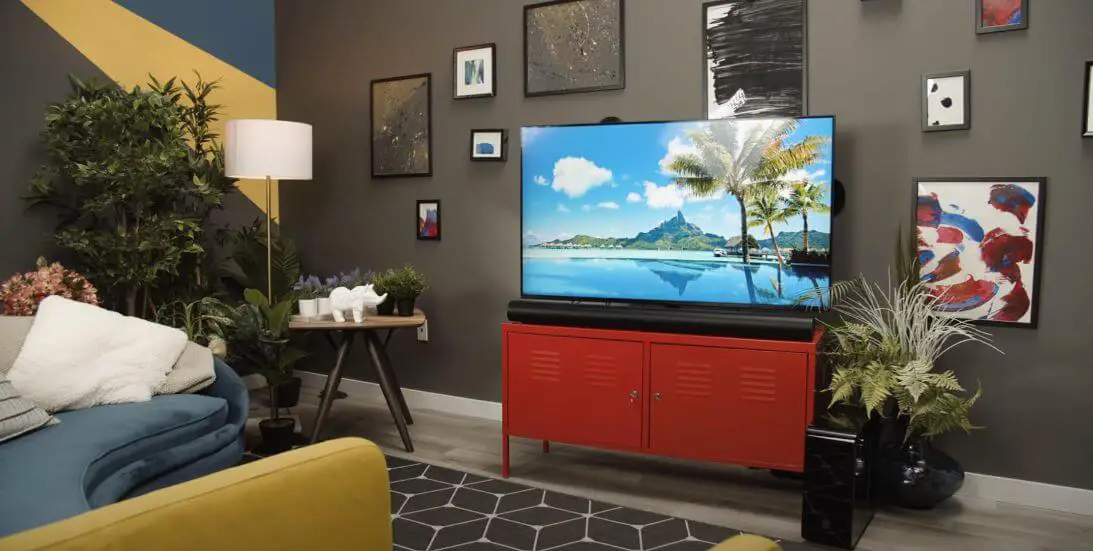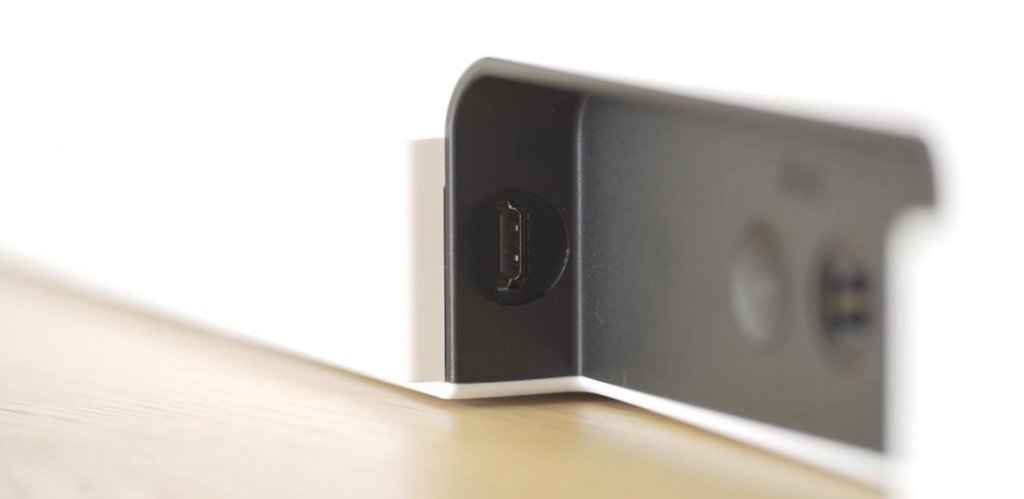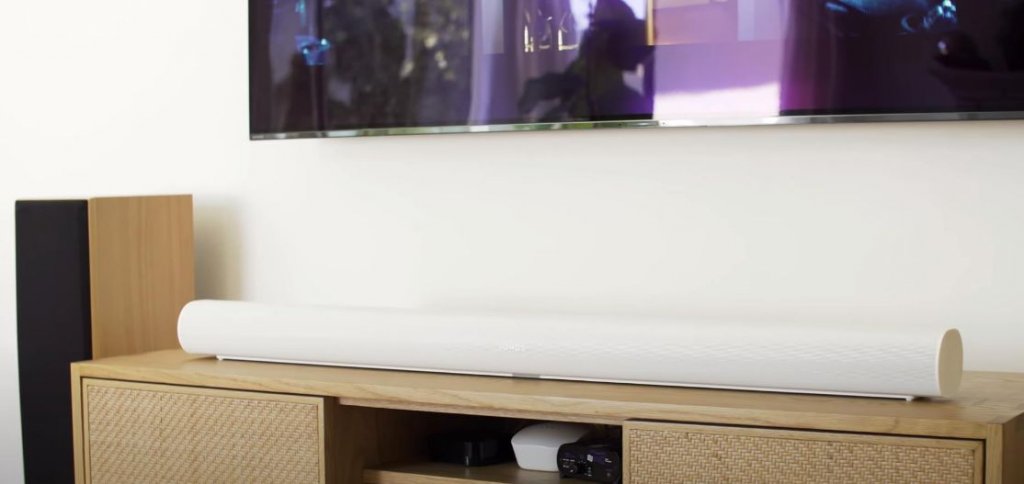Sonos Arc Soundbar Review
The Sonos Arc supersedes the Playbar and the Playbase models and is the first-ever Sonos soundbar with Dolby Atmos. The Playbar has had an eight-year-long legacy, which has continued to improve customers’ investment by getting smarter over time. It became the best selling soundbar ever from software upgrades such as true play tuning and voice support from amazon echo or google home devices. Eight years is, of course, a great lifespan, but there have been many advancements in the world of technology in that period. The demand for new hardware, so that’s why Sonos finally decided to make this new soundbar the Sonos Arc.
I’ll discuss a little bit later on in the post precisely whether the Arc is worth the upgrade if you have a Playbar already. The Playbar and Playbase have been replaced. You have two soundbar options, the beam and the Arc. I’ll also compare these two products, so you know which one is right for you.
Design
Let’s have a closer look at the design of the Sonos Arc. The Arc is available in a choice of two colours, matte black or white, to complement your room’s aesthetics visually. It’s taken on a completely new design, and if we compare it to the Playbar, it’s undergone a complete overhaul. It retains a modern feel with the colourway, remaining consistent on the whole product. This 270-degree elliptical shape is designed to keep the soundbar slim under your TV and squeeze the best performance possible from the drivers inside. There’s no denying this is a wide soundbar, 240 centimetres, which equates to about 45 inches. So really, the Arc is suitable for TVs 49 inches in size or more.
On the top, you’ve got the same touch control panel that we’re used to seeing, which has controls for volume, play, pause, skip, previous and a microphone privacy button for the voice control. If we look at the back, it’s got the power port, the join button, and the ethernet port. The HDMI Arc connection is now located on the side due to the Playbar receiving feedback. It couldn’t be positioned against the wall very easily. You can connect the Arc to your TV either through your TV’s e-Arc, standard HDMI Arc, or optical connection. I’ll be explaining everything to do about those connections a bit late.
Inside the Arc has a total of 11 high-performing drivers, consisting of eight supercharged elliptical woofers and three silk dome tweeters, which is the most number of speakers there’s ever been in a Sonos product. It’s also got four far-field microphones built-in for the voice control. The internals differ from the Playbar in that the Arc has fully sideways firing drivers and upward-firing ones to help project the sound at various angles. Sonos calls this a phased array, which essentially enables Arc to create more realistic 3d audio as the sound is bounced off the walls back to your ears at just the right moment. I’ll talk a little bit more about my experience of this a little bit later on in the post.
Sonos Arc and Dolby Atmos
I want to talk briefly about Dolby Atmos as this has been one of the most demanded features on a Sonos soundbar. It’s easier to understand what Dolby Atmos is by first explaining what Dolby Digital is. Dolby Digital and other codecs form audio compression responsible for distributing audio to multiple channels or speakers for an immersive surround sound effect. Dolby atmos expand on this by adding height channels, allowing sounds to be interpreted as three-dimensional objects. Atmos supports up to 128 of these objects. Using the up-firing speakers to reflect sound from the ceiling makes it a much more advanced and complex sound distribution method, resulting in a more immersive sound. For example, if a helicopter flew over your head, the upward-firing drivers would be activated to give the impression the helicopter was flying overhead. For more information about Dolby Atmos Soundbar.
Sonos Arc also supports Dolby True HD, which are the uncompressed versions for multi-channel audio distribution. It also supports Atmos. It’s essential to understand Dolby Atmos is an upcoming important audio codec. Dolby digital is still the most widely supported codec on NetFlix, amazon prime, and many tv shows. But in terms of future-proofing, it’s always better to have these features built-in ready for when they become prevalent later on.
So how do you get Dolby Atmos from the Sonos Arc? First of all, you will need to make sure that your tv has an e-Arc or a standard HDMI Arc connection. You might be wondering what HDMI Arc and e-Arc are. The Arc stands for audio return channel, a more complex HDMI form, which allows a sound system to receive the tv’s audio output and perform basic TV tasks. We’ve seen this already in the Sonos beam soundbar, enabling users to use their voice to turn on the tv, which is only possible through an HDMI Arc or Arc connection.
HDMI e-Arc is an enhanced version of HDMI Arc and has a much higher bandwidth, enabling Dolby Atmos to be passed through. So if your tv has an e-Arc connection, you’ll automatically be able to enjoy Dolby Atmos content in its true glory as well as other codecs such as Dolby Digital plus True HD.
Pretty much all true HD content is found in blu-rays. However, r e-Arc only started to be added to TVs in 2019. But that doesn’t necessarily mean you need to rush out and buy a new tv with an e-Arc if you don’t have one. Some but not all TVs can pass through Dolby Atmos through their standard HDMI Arc connection. You will need to refer to your tv spec to check this on your tv as they are all different. However, you cannot get Atmos through an optical connection, unfortunately, as they don’t let enough information through. But you can still benefit from great-sounding Dolby digital audio.
Of course, you’ll also need to check that the content you’re watching is recorded in Dolby Atmos. The Dolby Atmos official logo usually shows this in their preview or by checking the audio track manually. You can also check whether you’re getting Dolby atmos at any one time in the Sonos app on the now playing screen, which is very useful. If you’re not watching Dolby Atmos, it will likely be Dolby digital or similar, which will still immerse you using Arcs height and side channels.
What if my tv doesn’t support Atmos?
If you don’t want to upgrade the tv, maybe because you’ve only had it for a few years, the maximum you’ll be able to achieve with the Sonos Arc is 5.1 Dolby Digital. That is, of course, by adding a sub and rear speakers. That will still create an exceptional experience, and when the time comes to upgrade the tv to a new one with e-Arc, you’ll get a nice upgrade with your soundbar. For those of you who are looking for a simple one-speaker fully-fledged cinema-quality experience, you’re pretty much there with the Arc on its own.
However, you also have the option of adding a Sonos Sub and two rear speakers to create a 5.1.2 system. You can add these components entirely at your pace over time, and they are hugely worthwhile. If you’re looking for even more bass, you can add the sub gen three, or if you would like to have dedicated surround channels for even more immersion, you can add a pair of ones or one SL. It’s worth noting Arc will work with all generations of the Sonos sub. Similarly, if you have old play Ones, you can use these as surrounds to the Arc, and there are no acoustic differences between using the play ones as rears compared with the new One SLs or Ones.
So if you’re wondering what the difference is between the Ones and the One SL. The only difference is voice control. So you may use one SLs if using the Arc because voice control is already built into the Arc. You can also use the new Sonos fives as rears to the Arc. But I would advise against this unless you have them already like the sound that passes through the surround channels is somewhat ambient anyway, so you don’t need large surround speakers. Lastly, you can also use ceiling speakers as rears to the Arc. But they may conflict with the height channels from the Sonos Arc. The only times we would recommend using ceiling speakers as rears are purely for aesthetic value or where it wouldn’t be possible in your room to install One SL as rears, maybe if your sofa is in the middle of the room.
If you’re a Sonos user already, you’ll know that you’re able to stream all kinds of content to your Sonos speaker, whether that’s music, radio, podcasts, audiobooks and more. This is also true with the Arc, so it doesn’t just act as a soundbar for your TV. You can use the Sonos app or Spotify connect to stream from your favorite music service, or if you have an Apple device, you can use airplay 2 to cast any audio from your iPhone iPad or iMac to the Arc.
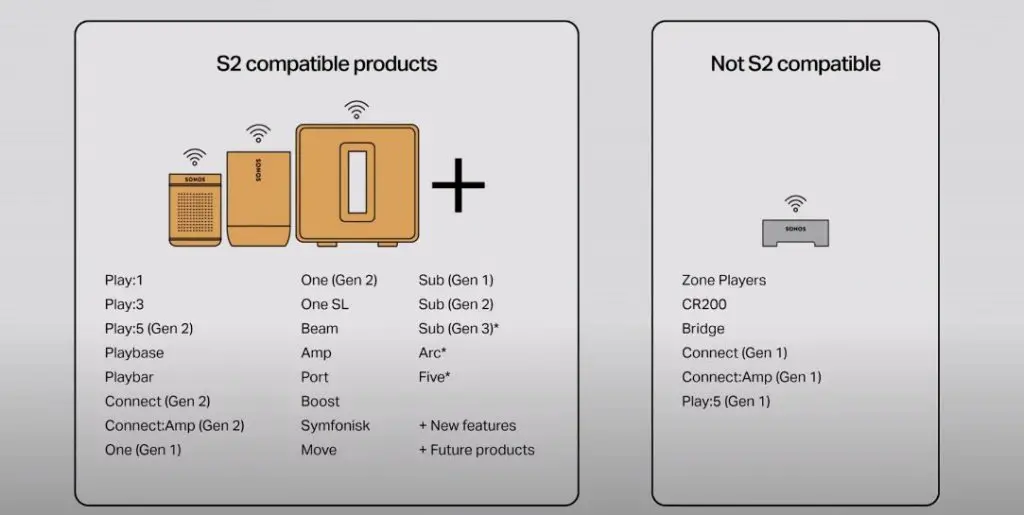
Feature
You’ve also got two voice assistants on the Arc, and that’s amazing. I’m sure many of you know what voice assistants do, but it means you can use your voice to complete all kinds of tasks, such as turning your tv on and off, play your favourite music services or ask random things such as news updates or playing games. It’s great for the family and saves you from having a separate voice-enabled device such as an echo or google home device.
A couple of other notable features are enhanced true play, which if you have an Apple device, you can acoustically optimize the sound for the room. It measures the room’s height from the soundbar and the walls opposite, taking your seating position into account, so the sound is directed back to you. It’s also got an IR repeater to pair automatically with your existing tv remote for volume control, so there are no extra tv remotes that you need to worry about.

As with all Sonos soundbars, you also get speech enhancement, which adjusts the EQ, so vocals are more pronounced and more comfortable to hear. This is a common issue with cheaper soundbars or tv’s internal speakers. So speech enhancement saves you needing to put subtitles on, or it’s useful if you’re hard of hearing.
Night mode is useful to activate when you’re watching or listening late at night when the kids have gone to bed, or you’ve got neighbours close by for example. This will dampen the audio’s very loud parts and bring up the quieter tones to give a more stable output level while making dialogue clearer without having to turn up the volume.
Sound Performance
In terms of sound quality, the Arc’s standout characteristic is its audio separation and detail mid-range, higher frequencies, and the vocal clarity are very impressive. Every nuance, whether watching films or listening to music, is delivered flawlessly. Being over a meter long also really helped with creating a wide sound stage. I watched many movies in both Dolby Digital and Atmos for the testing and was very impressed with both codecs. The experience of watching a film in Dolby Atmos wasn’t an astounding difference over the Dolby Digital version as the upward-firing drivers are still used for Dolby Digital content, and they do give a 3d effect. However, there’s an advantage in watching Dolby Atmos content, which took the detail and the immersion to another level.
I also tested many audio tracks from different artists. On the whole, they sounded full of life and presence with extremely impressive vocals. Kick drums and hi-hats were so clear and detailed, giving me probably the most enjoyable music listening experience I’ve ever had. from any soundbar, I do have one niggle, and that is the level of bass. It’s tight and clean bass when listening to bass-heavy tracks, such as r&b and dance music. But we would have liked a little more boom. We did need to turn the bass up a little bit on the EQ, which did help.
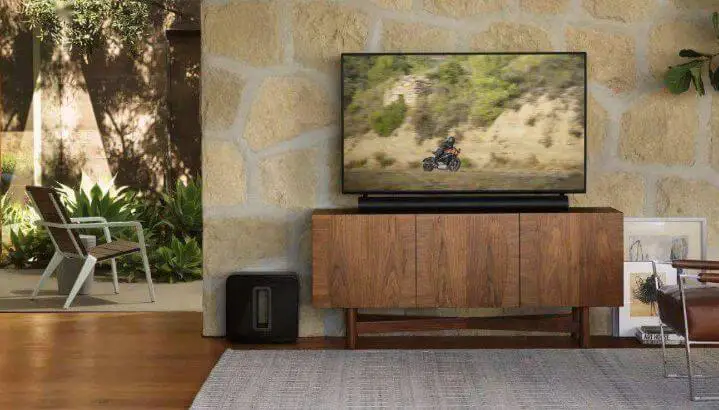
So I’ve been asked many times how does the Arc compares with the Playbar. The number one benefit you’ll get with the Arc over the Playbar is an extra three speakers and support for Dolby Atmos. The Arc’s phased array with five different channels allows you to experience a much more precise and more extensive sound stage. With the upward-firing and sideways firing surrounds coupled with this elliptical shape, you’ll get a truly immersive 3d experience with audio that’s reflected off your walls and ceiling to fill the room with sound. You wouldn’t get this with the Playbar because it’s simply not designed the same, and this does work for both music and films.
Sonos does claim the Arc outputs more bass than the Playbar after learning some lessons. I found the Arc and the Playbar to have comparable bass output levels, but the Arc did excel with tighter, less flappy bass. The Arc does cover more surface area than the Playbar and has more woofers built-in. So it should physically produce more bass. The Arc does sound clearer with no distortion at higher volumes due to those extra drivers, and the extra width allows more drivers to be packed closer together. That has a positive effect on the higher frequencies too. As well as sound quality improvements, there are several added features such as airplay 2, voice control, a more advanced true play, a dynamic led light and more. Sonos puts all of these benefits together make for a very enticing package.
The comparison between the Arc and the Beam is quite simple. If you have a small to medium-sized room, which I would estimate to be anything around the four by four meter, my advice would be to go for the Sonos beam. But if you have a larger room or your tv is larger than 49 inches, you can consider the Arc.
Pros and Cons
Onto the strengths and weaknesses. The bass could be nudged up at just a fraction. In heavy bass tracks, and if you’re someone who loves heavy bass with your music and films, you might feel that it requires the Sonos Sub’s addition. Also, the Arc being 114 centimetres wide could be a problem for some fitting it on your tv bench or between the tv legs is something you need to consider.
On to the strengths, the most significant strength about the Arc is the immersion of movies. If you’re a movie buff who won’t accept the sound from a tv’s internal speaker or cheaper soundbar, then the Arc will reward you with crystal clear vocals, superb detail and excellent immersion. As mentioned earlier, listening to music on the Arc was a real pleasure and offered the best experience we’ve had. When listening to music on a soundbar, it will fill a large room easily, and it also won’t distort at higher volumes.
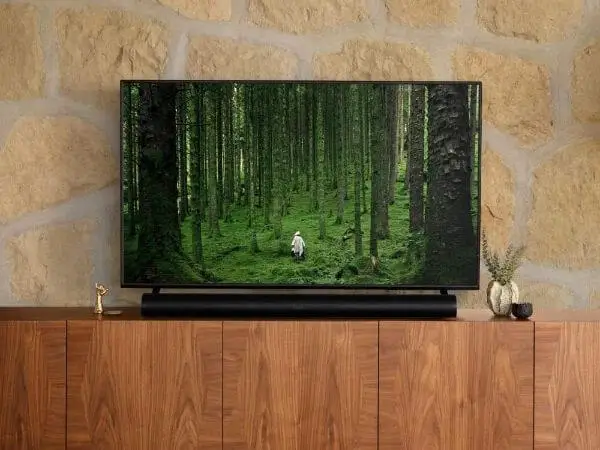
Conclusion
Many soundbars support Dolby Atmos on the market. This time Sonos has launched a new soundbar Arc. It can be said that Sonos has finally caught up with the trend to participate in Dolby Atmos’ support. It can be regarded as providing you with one more choice of Dolby Atmos soundbar.
The sound effects of the Sonos Arc are excellent. But it has only one HDMI input, so whether you can enjoy its sound performance at will depends on whether the TV supports Dolby Atmos. I like the simple design and stylish soundbar. Sonos Arc is indeed a Dolby Atmos soundbar worth starting with.
